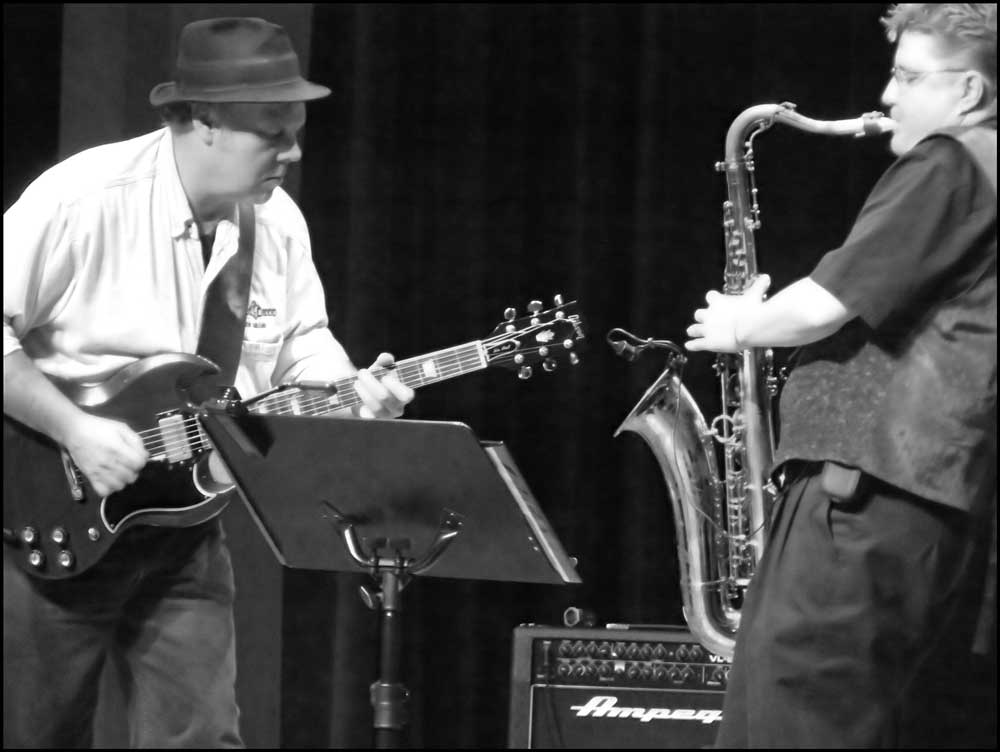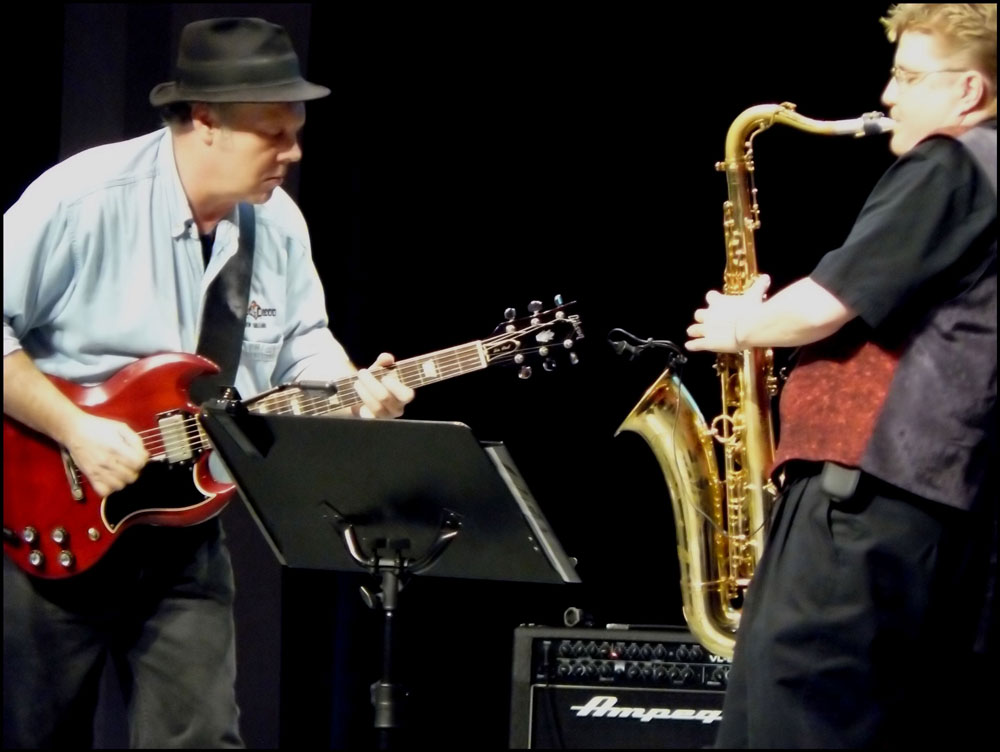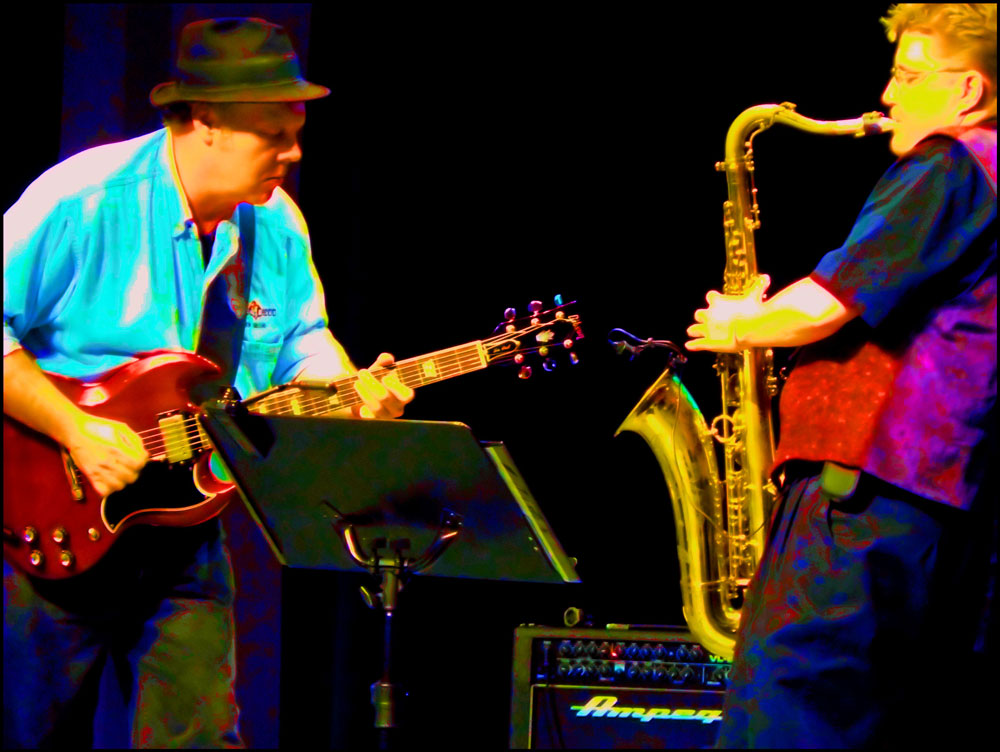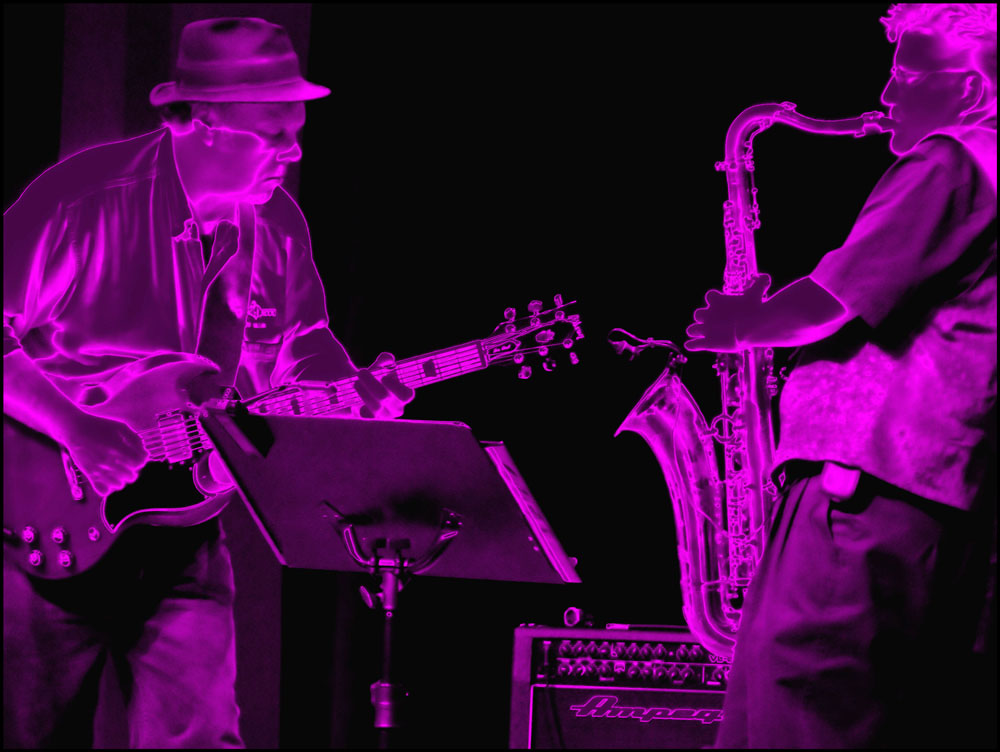I have a confession to make: I love 80s music. I can’t help it. I don’t know why this happened to me, but it did. I didn’t ask for it, anymore than I asked to be born with blond hair & blue eyes.
Somehow the music of the decade of excess, complete with its excessive production, just struck a chord with me. Unfortunately however, the 80s also spelled the end of the saxophone’s popularity in pop music.
© Bassic Sax 2008. Photo M. Margison; photo edits & enhancements by H. Kahlke.
In a previous post, I quoted Helienne Lindvall’s blog post written for the Guardian, titled Behind the music: where did all the saxophones go? While Helienne never speculated what caused the saxophone’s demise by the beginning of the 90s, Steve Peake, 80s Music Guide for About.com, has lots to say on the subject.
In his article: ’80s Instrument Spotlight – the Saxophone, Peake makes the argument that the saxophone was really a victim of the overproduction and cheesiness of the decade. Here are the salient excerpts:
…from the perspective of ’80s music, …sax solos often represented the pinnacle of overproduction and cheesy, sickeningly romantic arrangements. It was a time of excess in pop music, which unfortunately meant that some artists overused and misused the saxophone to gaudy if not comical effect.
© Bassic Sax 2008. Photo M. Margison; photo edits & enhancements by H. Kahlke.
As overproduction became an ever-swelling reality with the advent of new wave and MTV, epitomized by synthesizers galore and a penchant for the biggest sounds possible, the saxophone quickly became just another ingredient of pop music. In fact, sax solos showed up so often during the decade that their presence became a cliche, not to mention a glitzy, romanticized exclamation mark for ballads and other pop music ear candy. Though not always used gaudily, the sax often succumbed to the worst impulses of ’80s music, many of which are responsible for the degree to which some of it sounds dated and even insincere.
© Bassic Sax 2008. Photo M. Margison; photo edits & enhancements by H. Kahlke.
Peake is of course right, in his comment that the sax became an ingredient of pop music, but to say that it was overused is rather ridiculous. You could make the same comment about guitar solos: that they were overused. They were used in the 80s just as much, more so really, than sax solos. As a matter of fact, any solo instrument can be held up as an example, and said to be overused. However, the saxophone is the one to have been banished into popular music oblivion.
Our saxophones are interesting instruments. They can mimic vocals better than any other instrument. For example, I often get asked to do duets with vocalists, but then I obviously work in bands & with singers who appreciate saxophones. When the singer and I get to the duet part of a song, it often takes the form of a call and answer, with the horn providing the answer. This is where the saxophone’s ability to bend notes is highly valuable, and central to the instrument’s vocal characteristics.
© Bassic Sax 2008. Photo M. Margison; photo edits & enhancements by H. Kahlke.
Saxes are a strong presence when they are given space to play in song. Therefore it takes a strong & confident performer to work with a saxophone player. When you combine this together with the saxophone’s inability to play more than 1 note at a time, you get to what I feel is the root cause of the saxophone’s current popularity problems in popular music.
Saxophones are the “disposable” part of a band. The old adage: The last hired/first fired has never been truer. Sax sounds can be duplicated by synthesizers & other electronics, or now you can sample your favourite sax solo from by-gone days. No need to have a live player on stage & on the payroll. It’s rather depressing really.
© Bassic Sax 2008. Photo M. Margison; photo edits & enhancements by H. Kahlke.
Most sax players who do work in pop bands are utility players who double on sax, while doing keys, percussion instruments, rhythm guitar, whatever, and then switch off to the sax for their “quickie” horn line or solo, and then go back to whatever they were doing before.
The most extreme example of this I’ve ever personally seen, was during one of Cher’s concerts when she performed It’s In His Kiss (The Shoop, Shoop Song), from her movie Mermaids. This song is the only Cher song that utilizes a saxophone at all. For the sax solo in The Shoop, Shoop Song, a guy ran out on stage, played the solo, and exited the stage just as fast. I believe he was later introduced as one of the tour managers. (Which would explain why he was the only person on stage wearing a suit.)
© Bassic Sax 2008. Photo M. Margison; photo edits & enhancements by H. Kahlke.
So where does that leave sax players in the future of pop music? I don’t know. I suspect learning lots of other instruments. Peake, on the other hand, leaves us with this rather rosy view of the future:
Despite the damage undoubtedly done by its ’80s reputation, the saxophone has persevered and remains an important part of various musical styles still today, even pop and rock. Part of this can be attributed to the work of post-punk artists who essentially deconstructed the instrument by emphasizing dissonance and cacophony instead of the smooth, slick melodic complements it had been previously known for. Still more responsible for its survival is the enduring versatility of the saxophone, a musical tool that adapts with ease to more styles, arguably, than any other instrument widely used in popular music.
© Bassic Sax 2008. Photo M. Margison; photo edits & enhancements by H. Kahlke.
As I read Peake’s conclusion, I immediately thought of the one genre of music where saxophones have traditionally not been heard: country. Recently though, we are seeing saxophones suddenly appearing in a number of big name country acts.
So as they say… As one door closes, another one opens… But I think I’d be learning keyboard, percussion, guitar, & so on, & so on, just to be safe.










